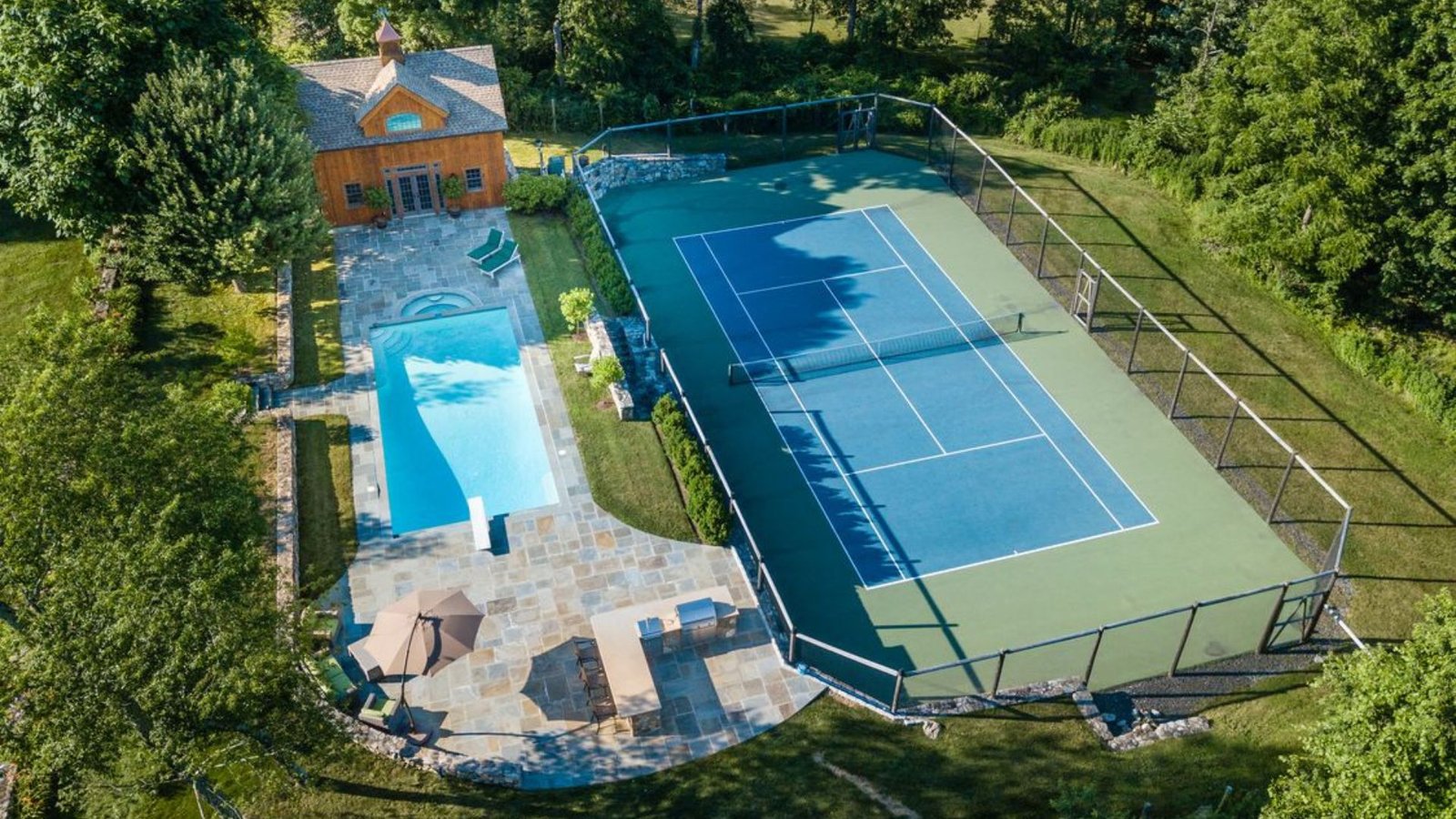Real estate is a fundamental element in the development of sports facilities. Choosing the right location, designing effective structures, and making smart investments are crucial for creating successful sports venues. This article explores the role of real estate in sports facilities, highlighting key factors that contribute to their success.

Key Factors in Real Estate for Sports Facilities
Location Selection
Choosing the right location is essential for the success of sports facilities:
- Accessibility: The facility should be easily accessible by public transport and major roadways. Good transportation links ensure that fans, players, and staff can reach the venue conveniently.
- Proximity to Population Centers: Locating sports facilities near large population centers can increase attendance. A venue close to a city or urban area attracts more visitors and generates higher ticket sales.
- Land Availability and Zoning: Adequate land availability and appropriate zoning are crucial. The selected site must meet zoning regulations and provide enough space for the facility and any additional amenities.
Design and Construction
The design and construction of sports facilities significantly impact their functionality and appeal:
- Capacity and Seating: The facility’s capacity should align with expected attendance. Proper seating arrangements enhance the spectator experience and maximize revenue.
- Multi-Use Facilities: Designing facilities that can host multiple types of events (e.g., concerts, conventions) increases their utility and revenue potential. Multi-use designs attract a broader range of events and audiences.
- Modern Amenities: Incorporating modern amenities, such as luxury suites, high-speed Wi-Fi, and state-of-the-art audio-visual systems, enhances the fan experience and generates additional revenue through premium services.
Investment and Financing
Investing in and financing sports facilities involves several key considerations:
- Public vs. Private Funding: Facilities can be funded through public financing, private investments, or a combination of both. Public funding often comes from municipal bonds or taxes, while private funding may come from sponsors or investors.
- Economic Impact Analysis: Conducting an economic impact analysis helps in assessing the potential benefits of the facility. Analyzing factors such as job creation, increased tourism, and local business growth helps secure funding and support.
- Long-Term Revenue Streams: Identifying and developing long-term revenue streams, such as naming rights, sponsorships, and concessions, is essential for financial sustainability. Diverse revenue sources help cover operating costs and generate profits.
Community and Stakeholder Engagement
Engaging with the community and stakeholders is vital for the success of sports facilities:
- Community Support: Gaining community support through public consultations and engagement helps ensure that the facility meets local needs and preferences. Positive community relations can enhance the facility’s reputation and increase attendance.
- Stakeholder Involvement: Involving key stakeholders, including sports teams, local businesses, and government officials, in the planning process ensures that the facility aligns with their interests and expectations. Collaboration with stakeholders can also help secure funding and support.
Case Studies of Successful Sports Facilities
AT&T Stadium, Arlington, Texas
AT&T Stadium is a prime example of a successful sports facility:
- Location and Design: Located in Arlington, Texas, the stadium is strategically positioned between Dallas and Fort Worth, making it accessible to a large population base. Its modern design features a retractable roof, a massive video screen, and ample seating.
- Multi-Use Functionality: The stadium hosts a variety of events, including NFL games, concerts, and college football games. Its versatility and state-of-the-art amenities attract diverse events and audiences.
- Economic Impact: AT&T Stadium has significantly impacted the local economy by generating revenue from events, creating jobs, and stimulating local business activity. It has become a landmark destination in the region.
The O2 Arena, London
The O2 Arena in London showcases the importance of location and design:
- Central Location: Situated in Greenwich, London, The O2 Arena benefits from its central location and excellent transport links. It attracts a high volume of visitors and hosts a wide range of events.
- Versatile Design: The arena’s design allows it to accommodate concerts, sports events, and other entertainment activities. Its flexible layout and modern facilities enhance the overall experience for attendees.
- Revenue Generation: The O2 Arena generates substantial revenue through ticket sales, sponsorships, and premium services. It has become one of the leading entertainment venues in the world.
U.S. Bank Stadium, Minneapolis, Minnesota
U.S. Bank Stadium exemplifies innovative design and community engagement:
- Sustainable Design: The stadium features a transparent roof and energy-efficient systems, contributing to its sustainability. Its design enhances the fan experience and reduces environmental impact.
- Community Integration: U.S. Bank Stadium was developed with community input and support. Its design and functionality reflect the needs and preferences of local residents and stakeholders.
- Economic Benefits: The stadium has contributed to the local economy by attracting major events, creating jobs, and stimulating business growth. It serves as a hub for sports and entertainment in Minneapolis.
Challenges and Considerations
High Costs and Financial Risks
Developing sports facilities involves significant costs and financial risks:
- Construction Costs: The costs of building or renovating sports facilities can be substantial. Ensuring that the facility generates sufficient revenue to cover these costs is crucial for financial success.
- Economic Uncertainty: Fluctuations in the economy and changes in market conditions can impact revenue and profitability. Financial planning and risk management are essential to address potential uncertainties.
Environmental and Social Impacts
Sports facilities can have environmental and social implications:
- Environmental Sustainability: Implementing sustainable practices and energy-efficient technologies helps minimize the environmental impact of sports facilities. Green building certifications and eco-friendly designs contribute to sustainability.
- Social Impact: The development of sports facilities can affect local communities, including issues such as displacement and changes in neighborhood dynamics. Engaging with residents and addressing their concerns helps ensure positive outcomes.
Conclusion
Real estate plays a crucial role in the development of sports facilities, impacting location selection, design, investment, and community engagement. Successful sports facilities contribute to economic growth, enhance community experiences, and attract diverse events.
By understanding the key factors and addressing challenges, developers, investors, and stakeholders can create sports facilities that deliver long-term benefits and contribute to vibrant, thriving communities.




